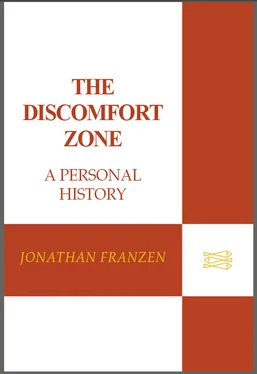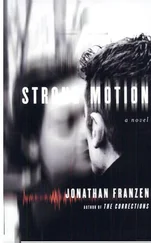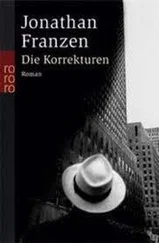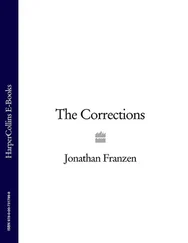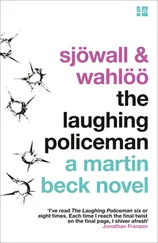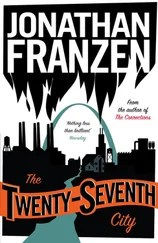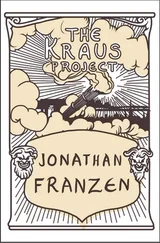Jonathan Franzen - The Discomfort Zone
Здесь есть возможность читать онлайн «Jonathan Franzen - The Discomfort Zone» — ознакомительный отрывок электронной книги совершенно бесплатно, а после прочтения отрывка купить полную версию. В некоторых случаях можно слушать аудио, скачать через торрент в формате fb2 и присутствует краткое содержание. Город: Ney York, Год выпуска: 2006, ISBN: 2006, Издательство: Farrar, Straus and Giroux, Жанр: Современная проза, на английском языке. Описание произведения, (предисловие) а так же отзывы посетителей доступны на портале библиотеки ЛибКат.
- Название:The Discomfort Zone
- Автор:
- Издательство:Farrar, Straus and Giroux
- Жанр:
- Год:2006
- Город:Ney York
- ISBN:918-0-312-94841-2
- Рейтинг книги:3.5 / 5. Голосов: 2
-
Избранное:Добавить в избранное
- Отзывы:
-
Ваша оценка:
- 80
- 1
- 2
- 3
- 4
- 5
The Discomfort Zone: краткое содержание, описание и аннотация
Предлагаем к чтению аннотацию, описание, краткое содержание или предисловие (зависит от того, что написал сам автор книги «The Discomfort Zone»). Если вы не нашли необходимую информацию о книге — напишите в комментариях, мы постараемся отыскать её.
Notable Book of the Year The Discomfort Zone
The Discomfort Zone — читать онлайн ознакомительный отрывок
Ниже представлен текст книги, разбитый по страницам. Система сохранения места последней прочитанной страницы, позволяет с удобством читать онлайн бесплатно книгу «The Discomfort Zone», без необходимости каждый раз заново искать на чём Вы остановились. Поставьте закладку, и сможете в любой момент перейти на страницу, на которой закончили чтение.
Интервал:
Закладка:
A few months after the Homonym Spelldown, just after summer vacation started, Toczko ran out into Grant Road and was killed by a car. What little I knew then about the world’s badness I knew mainly from a camping trip, some years earlier, when I’d dropped a frog into a campfire and watched it shrivel and roll down the flat side of a log. My memory of that shriveling and rolling was sui generis, distinct from my other memories. It was like a nagging, sick-making atom of rebuke in me. I felt similarly rebuked now when my mother, who knew nothing of Toczko’s rivalry with me, told me that he was dead. She was weeping as she’d wept over Tom’s disappearance some weeks earlier. She sat me down and made me write a letter of condolence to Toczko’s mother. I was very much unaccustomed to considering the interior states of people other than myself, but it was impossible not to consider Mrs. Toczko’s. Though I never met her in person, in the ensuing weeks I pictured her suffering so incessantly and vividly that I could almost see her: a tiny, trim, dark-haired woman who cried the way her son did.

“EVERYTHING I DOmakes me feel guilty,” says Charlie Brown. He’s at the beach, and he has just thrown a pebble into the water, and Linus has commented, “Nice going…It took that rock four thousand years to get to shore, and now you’ve thrown it back.”
I felt guilty about Toczko. I felt guilty about the little frog. I felt guilty about shunning my mother’s hugs when she seemed to need them most. I felt guilty about the washcloths at the bottom of the stack in the linen closet, the older, thinner washcloths that we seldom used. I felt guilty for preferring my best shooter marbles, a solid red agate and a solid yellow agate, my king and my queen, to marbles farther down my rigid marble hierarchy. I felt guilty about the board games that I didn’t like to play — Uncle Wiggily, U.S. Presidential Elections, Game of the States — and sometimes, when my friends weren’t around, I opened the boxes and examined the pieces in the hope of making the games feel less forgotten. I felt guilty about neglecting the stiff-limbed, scratchy-pelted Mr. Bear, who had no voice and didn’t mix well with my other stuffed animals. To avoid feeling guilty about them, too, I slept with one of them per night, according to a strict weekly schedule.
We laugh at dachshunds for humping our legs, but our own species is even more self-centered in its imaginings. There’s no object so Other that it can’t be anthropomorphized and shanghaied into conversation with us. Some objects are more amenable than others, however. The trouble with Mr. Bear was that he was more realistically bearlike than the other animals. He had a distinct, stern, feral persona; unlike our faceless washcloths, he was assertively Other. It was no wonder I couldn’t speak through him. An old shoe is easier to invest with comic personality than is, say, a photograph of Cary Grant. The blanker the slate, the more easily we can fill it with our own image.
Our visual cortexes are wired to quickly recognize faces and then quickly subtract massive amounts of detail from them, zeroing in on their essential message: Is this person happy? Angry? Fearful? Individual faces may vary greatly, but a smirk on one is a lot like a smirk on another. Smirks are conceptual, not pictorial. Our brains are like cartoonists — and cartoonists are like our brains, simplifying and exaggerating, subordinating facial detail to abstract comic concepts.
Scott McCloud, in his cartoon treatise Understanding Comics , argues that the image you have of yourself when you’re conversing is very different from your image of the person you’re conversing with. Your interlocutor may produce universal smiles and universal frowns, and they may help you to identify with him emotionally, but he also has a particular nose and particular skin and particular hair that continually remind you that he’s an Other. The image you have of your own face, by contrast, is highly cartoonish. When you feel yourself smile, you imagine a cartoon of smiling, not the complete skin-and-nose-and-hair package. It’s precisely the simplicity and universality of cartoon faces, the absence of Otherly particulars, that invite us to love them as we love ourselves. The most widely loved (and profitable) faces in the modern world tend to be exceptionally basic and abstract cartoons: Mickey Mouse, the Simpsons, Tintin, and — simplest of all, barely more than a circle, two dots, and a horizontal line — Charlie Brown.
CHARLES SCHULZ ONLYever wanted to be a cartoonist. He was born in St. Paul in 1922, the only child of a German father and a mother of Norwegian extraction. Much of the existing Schulzian literature dwells on the Charlie Brownish traumas in his early life: his skinniness and pimples, his unpopularity with girls at school, the inexplicable rejection of a batch of his drawings by his high-school yearbook, and, some years later, the rejection of his marriage proposal by the real-life Little Red-Haired Girl, Donna Mae Johnson. Schulz himself spoke of his youth in a tone close to anger. “It took me a long time to become a human being,” he told an interviewer in 1987.
I was regarded by many as kind of sissyfied, which I resented because I really was not a sissy. I was not a tough guy, but…I was good at any sport where you threw things, or hit them, or caught them, or something like that. I hated things like swimming and tumbling and those kinds of things, so I was really not a sissy. […But] the coaches were so intolerant and there was no program for all of us. So I never regarded myself as being much and I never regarded myself as good looking and I never had a date in high school, because I thought, who’d want to date me? So I didn’t bother.
Schulz “didn’t bother” going to art school, either — it would only have discouraged him, he said, to be around people who could draw better than he could.
On the eve of Schulz’s induction into the Army, his mother died of cancer. Schulz later described the loss as a catastrophe from which he almost did not recover. During basic training he was depressed, withdrawn, and grieving. In the long run, though, the Army was good for him. He entered the service, he recalled later, as a “nothing person” and came out as a staff sergeant in charge of a machine-gun squadron. “I thought, by golly, if that isn’t a man, I don’t know what is,” he said. “And I felt good about myself, and that lasted about eight minutes, and then I went back to where I am now.”
After the war, he returned to his childhood neighborhood, lived with his father, became intensely involved in a Christian youth group, and learned to draw kids. For the rest of his life, he virtually never drew adults. He avoided adult vices — didn’t drink, didn’t smoke, didn’t swear — and, in his work, he spent more and more time in the imagined yards and sandlots of his childhood. He was childlike, too, in the absoluteness of his scruples and inhibitions. Even after he became famous and powerful, he was reluctant to demand a more flexible layout for “Peanuts,” because he didn’t think it was fair to the papers that had been his loyal customers. He also thought it was unfair to draw caricatures. (“If somebody has a big nose,” he said, “I’m sure that they regret the fact they have a big nose and who am I to point it out in gross caricature?”) His resentment of the name “Peanuts,” which his editors had given the strip in 1950, was still fresh at the end of his life. “To label something that was going to be a life’s work with a name like ‘Peanuts’ was really insulting,” he told an interviewer in 1987. To the suggestion that thirty-seven years might have softened the insult, Schulz replied: “No, no. I hold a grudge, boy.”
Читать дальшеИнтервал:
Закладка:
Похожие книги на «The Discomfort Zone»
Представляем Вашему вниманию похожие книги на «The Discomfort Zone» списком для выбора. Мы отобрали схожую по названию и смыслу литературу в надежде предоставить читателям больше вариантов отыскать новые, интересные, ещё непрочитанные произведения.
Обсуждение, отзывы о книге «The Discomfort Zone» и просто собственные мнения читателей. Оставьте ваши комментарии, напишите, что Вы думаете о произведении, его смысле или главных героях. Укажите что конкретно понравилось, а что нет, и почему Вы так считаете.
